What College Classes Are Easy and Dont Take Much Time
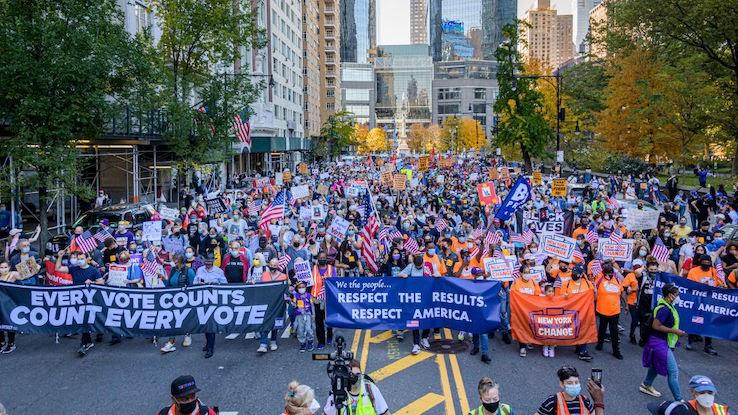
While the Electoral College is as old as the American Constitution, it's also been controversial since the very beginning of the country. And it remains a point of contention even today — particularly today in the aftermath of the 2020 presidential election. In the wake of his historic loss, Donald Trump has been "pressing his aides on whether Republican legislatures in key states could overturn the results of the presidential election and pick pro-Trump electors," noted Jamelle Bouie, a columnist for The New York Times. The fact that this would even theoretically be possible — that the electors could this easily be manipulated and the will of the American people this easily and purposefully ignored — highlights how undemocratic relying on the Electoral College has the potential to be. And this controversy is resulting in renewed cries to abolish the system of people who ultimately choose the president.
As Americans once again endure heated dissent surrounding an election, more than 60% have indicated they're in favor of eliminating the Electoral College completely and relying solely on the popular vote to determine the outcomes of presidential elections. As these calls to dissolve the system intensify, the very existence of the process is being called into question. But what's the full reasoning behind this, what would the elimination of the Electoral College look like and how difficult would its removal be to achieve? Like many concepts in American politics, understanding the answers requires a deeper dive into the history, arguments and potential solutions.
What Does the Electoral College Do, and How Does It Work?
When it comes to electing most state and federal officials — like governors, Senators, Representatives and others — people vote directly for a candidate, and the person who earns the most votes from the people is deemed the winner; it's a one-person, one-vote system. In the case of voting for the president, however, there's an extra step in the voting process: vote casting from electors. These intermediaries are nominated — and subsequently named following a vote — every four years at state-level political conventions by political party committees. These electors are usually people whom party officials want "to reward for their service to and support of the party." They might be elected officials in the state, donors, party activists or others who have a "personal or professional connection with the party's candidate." And they're the people who ultimately decide the outcome of a presidential election.
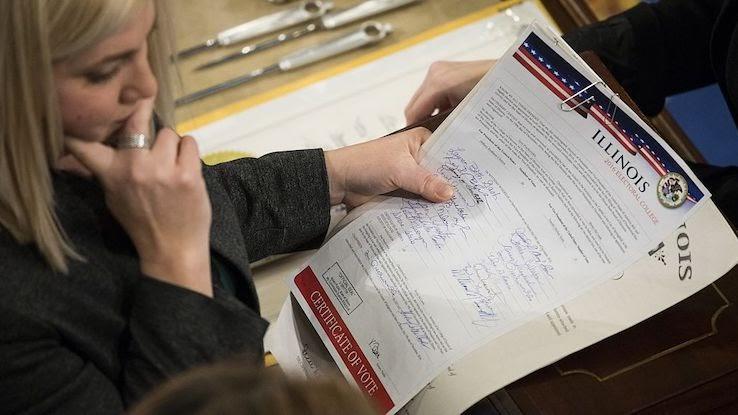
There are 538 electors in all, and the number of electors apportioned to each state depends largely on its population. Each state is entitled to have one corresponding elector based on its number of Senators and Representatives in Congress, and Washington, D.C., has three electors of its own. Numbers of electors among states vary widely in large part because the number of Representatives varies. While each state gets two Senators regardless of its population size, states have different numbers of Representatives due to their differing numbers of congressional districts, which are meant to give equal political voice to people in every area of a state. States are allocated one elector per one Representative to theoretically maintain this equal representation.
After citizens vote, electors do as well; each elector can cast one vote. After determining whom the people in their states voted for, electors are meant to cast their votes to align with the wishes of their states' citizens. Because of this, many states have a "winner take all" policy in which all electoral votes are allocated to the winner of the popular vote in the state — although some states still allow electoral votes to be split to provide proportional representation. A presidential candidate must earn at least 270 electoral votes — just over half — to win the race. In the event that no candidate reaches that number, House Representatives choose from among the top three presidential candidates, with each state getting one vote. The Senate then selects the vice president from the remaining candidates in the same way.
The Electoral College was created for purposes that some of its proponents still tout as benefits. Among several other reasons, the framers of the Constitution proposed the Electoral College system because they worried that the population wouldn't be equipped to make informed voting decisions, and they also feared that the states that had more voters (or higher voting populations) would continually end up selecting the president. This was essentially a compromise over an existing debate about whether Congress or everyday voters should have the power to choose the president. But this debate took place hundreds of years ago, and many of the then-central issues in the argument for creating the Electoral College no longer exist. And in recent times, the Electoral College has caused some unique problems in modern elections.
One of the prominent arguments against the Electoral College is that it disadvantages large states. Because a state can have no fewer than three electoral votes — corresponding to one Representative plus two Senators — people in small states get proportionally more say in electing the president than residents of larger states. In 2008, for instance, the 532,668 people of Wyoming had three electoral votes, or one per every 177,556 people. The almost 25 million people of Texas, by contrast, had only one Electoral College vote for every 715,499 people. In other words, a person in Wyoming had about four times more voting power than a Texan did when these statistics were measured. And as a whole, a state on average had one electoral vote for every 565,166 people. Those are some jarring discrepancies.
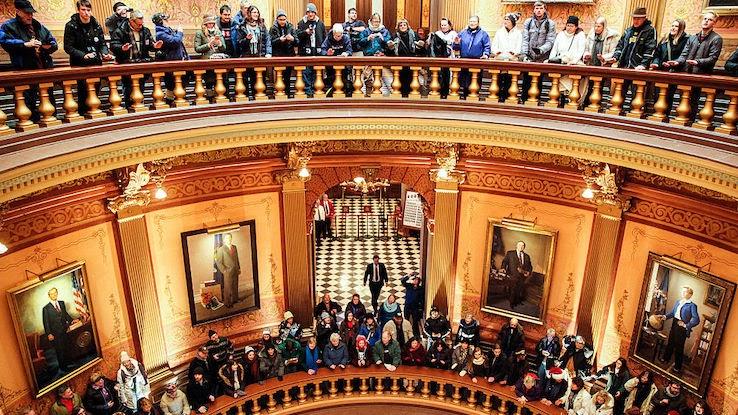
Supporters of the Electoral College sometimes argue that it offers necessary protections to farmers or rural voters whose votes would otherwise be overwhelmed in bigger states by a popular vote cast largely by urban and suburban voters. However, due to their massive sizes, states like Texas and California have plenty of rural voters and farmers themselves, with the former state having the largest number of farms and the latter the most money earned from agriculture in the country. Claims that the framers created the Electoral College to guarantee the voice of rural voters also make little sense, as roughly 90% of the population of the country lived on farms several hundred years ago. George Washington and Thomas Jefferson likely never imagined the level of urbanization we have today.
The Electoral College also disadvantages not just minority ethnic and racial groups, which tend to live along the East and West coasts as well as in the South, but also minority political groups. Because every state except Maine and Nebraska requires electors to cast their votes on a winner-take-all basis, members of the minority parties in large states that consistently favor one party over another have no real say in electing the president. In a popular election, millions of republicans and democrats in such states would suddenly have a real voice in selecting the leader of the country if elections were based solely on the concept of one person, one vote.
And It Causes Candidates to Ignore Low-Elector States
At the same time, the Electoral College also puts small states at a disadvantage — just in a different way. While voters in such states theoretically have more clout in deciding which nominee gets to be president because their votes carry more mathematical weight, their smaller numbers of electoral votes often cause candidates to neglect them while campaigning. A candidate is more likely to campaign in a mid-size state where they can pull 20 or so electoral votes instead of a low-population state where winning would only earn them three electoral votes.
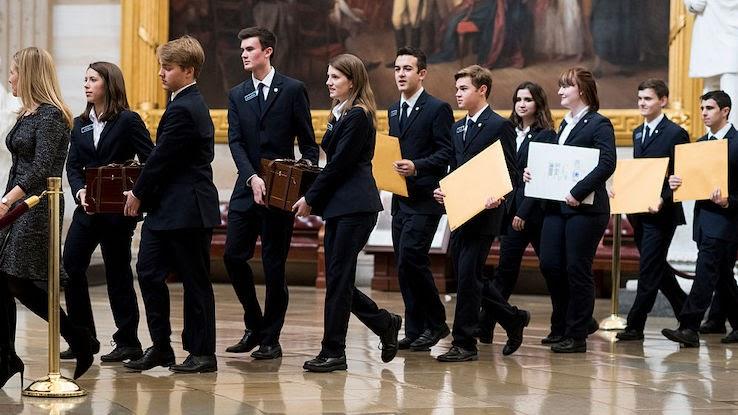
If the Electoral College is supposed to make candidates care more about small states, it fails at doing that. During the 2016 presidential election, two-thirds of all campaign events happened in the six fairly large states of Florida, Michigan, North Carolina, Ohio, Pennsylvania and Virginia. Those states combined with Arizona, Colorado, Iowa, Nevada, New Hampshire and Wisconsin accounted for 96% of campaign events for the 2016 election, and in total, 25 states — half of the states in the U.S. — didn't see any campaign events at all. But not all of these were the smallest states, elector-wise, in the country. It's easy to see how the Electoral College actively harms both small and large states. So who exactly does it help?
Does the Electoral College Favor Swing States?
The Electoral College works best not for states of any one size, but rather those that have a close-to-even mix of republican and democrat voters — those whose votes aren't consistently for the republican or democrat candidate from election to election but who might swing one way or the other. Because most states award all of their electoral votes to whoever wins the popular vote in the state, it doesn't make sense for presidential candidates to give large or small states much attention if they're historically likely to vote for one party or the other.
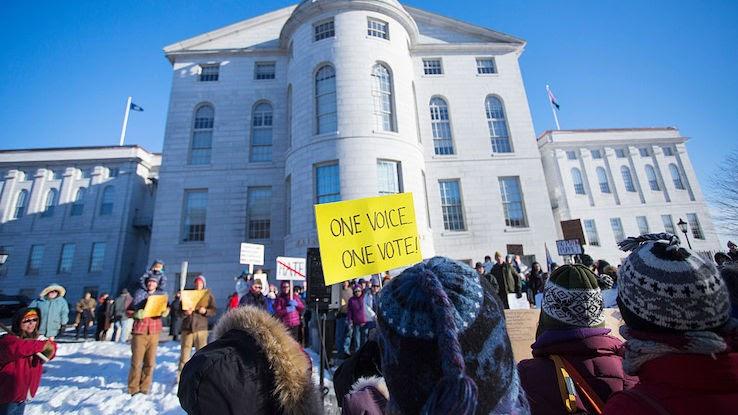
New York, for example, has only elected a republican for president six times since the Great Depression, so despite the fact that it has the third-largest number of electors, it's considered an uncontested blue state. And it doesn't make sense for a republican candidate to spend time campaigning in such a democratic stronghold when they're highly unlikely to flip the vote. It does make sense, however, for candidates to campaign in states that aren't staunchly red or blue, but the result is that they subsequently focus much of their effort campaigning only in these swing states where there's no immediate guarantee they'll win or lose. The Electoral College ensures that this same limited pool of swing states rather than the full union decides the fate of the country every four years as candidates vie to flip votes by campaigning heavily in these areas. The system "does not lead presidential candidates to cater to the interests of small states or big states. On the contrary, only states that randomly happen to have a close partisan balance get attention."
This discrepancy is also a factor in one of the most railed-against features of the Electoral College: It allows candidates to win the presidency even when a clear majority of the country doesn't want them in office. A candidate could prove unusually unpopular, with millions more voters not trusting them with the office of the presidency compared to those who do. If just a slim majority of people in states like New Hampshire, Ohio or Florida support the candidate with fewer votes, it doesn't matter how many people in the rest of the country don't.
This happened to presidential candidates Andrew Jackson (1824), Samuel Tilden (1876), Al Gore (2000) and Hillary Clinton (2016). Despite more Americans wanting them in office, which was demonstrated by their higher vote counts when looking at the popular vote, a political system designed to accommodate slavery and antiquated ideas about voting laws ended up handing their opponents leadership of the nation. This effect also doesn't just advantage one party, either. In 2012, for instance, while Barack Obama won the popular vote by 51.1% to Mitt Romney's 47.2%, all states could have shifted 5.3% toward Romney — a clear popular majority — and Obama still could have won because of where his votes came from and how the electors would've cast their votes.
What Can We Do About the Electoral College?
This is a difficult question to answer because the pathways themselves to the different options aren't easily surmountable. The most straightforward option — getting rid of the Electoral College outright — would need to take place through a constitutional amendment. This would require the support of at least two-thirds of the Senate, two-thirds of the House of Representatives and ratification by three-quarters of the states. This could prove difficult to achieve because some states (and Conservative voters in general) perceive the continuation of the Electoral College to put them at an advantage.
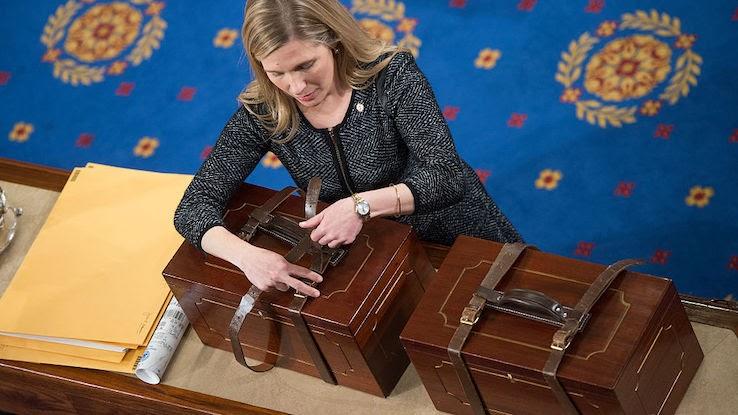
States could also award votes based on the candidate who wins each congressional district, like Maine and Nebraska do. In theory, this gives politicians more incentive to attend to each state, as there are always at least some votes up for grabs. However, because congressional districts are often gerrymandered — meaning their boundaries are plotted out in such a way as to advantage one party no matter how people vote — this could actually make the Electoral College's effects worse. For example, Hillary Clinton won the national popular vote by 2% in 2016 but still lost in terms of electoral votes. Under a congressional district method, Clinton could have won the popular vote by as much as 5% and still lost the election. Eliminating the Electoral College and sticking to the concept of one person, one vote — a true popular vote — would be fair, but it would also be difficult to institute.
The National Popular Vote Interstate Compact May Be a Promising Solution
One option that could succeed may be the National Popular Vote Interstate Compact (NPVIC). To join this agreement, states pass a law that binds their electoral votes to whichever candidate wins the national popular vote. The agreement only goes into effect once 270 electoral votes' worth of states sign on, and only 181 have to date. Should membership ever reach that number, the Electoral College's effects will essentially end, even if the system itself remains in place. The number of people who actually support a candidate would become the deciding factor in who wins presidential elections rather than whether or not the candidate has a slight majority in battleground states.
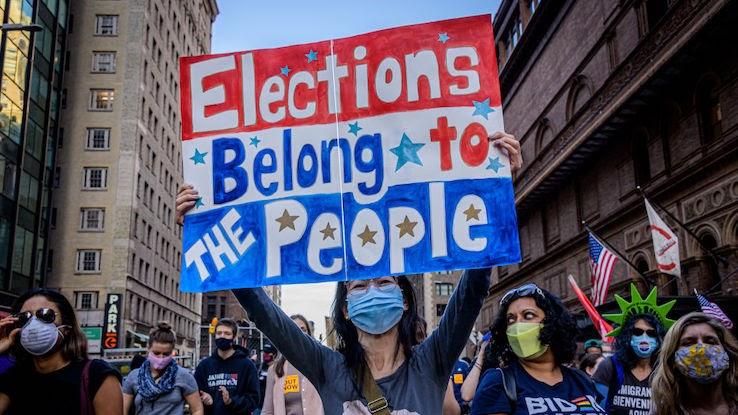
Critics of the NPVIC argue that smaller states would lose power under such a system, that the Electoral College already encourages politicians to ignore most of them. Another concern is whether the agreement is constitutional; electors technically don't have to vote for the candidate their state voted for unless they've pledged to do so and could thus become "faithless electors" — which can see them facing fines and imprisonment, depending on the state they represent. While some states have passed laws requiring electors to vote for the candidate who wins their state, the constitutionality of such laws was also uncertain for a long time. However, on July 6, 2020, the Supreme Court handed proponents of the NPVIC a major win when it ruled that states can require electors to vote a certain way.
The final fate of the Electoral College remains uncertain. However, as slow as their progress may sometimes feel, the government and our election processes have changed in the past — and when it comes to the electoral system, they seem primed to do so again, even if it takes some time.
Source: https://www.ask.com/culture/time-abolish-electoral-college?utm_content=params%3Ao%3D740004%26ad%3DdirN%26qo%3DserpIndex&ueid=8f50387e-e1be-4096-aab2-e8f96f010889
0 Response to "What College Classes Are Easy and Dont Take Much Time"
Post a Comment